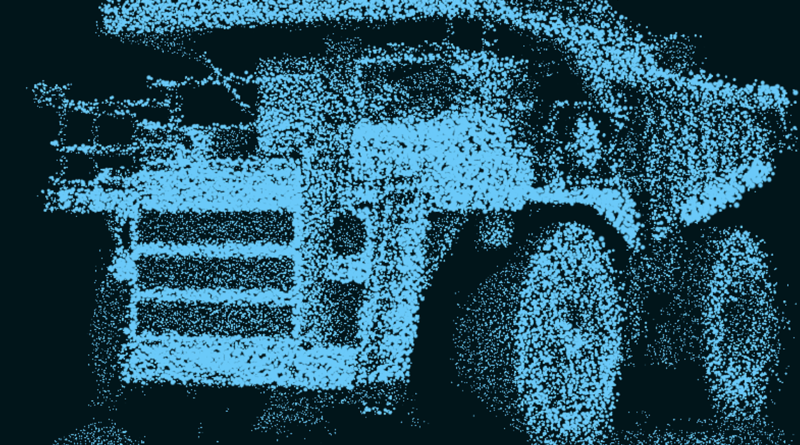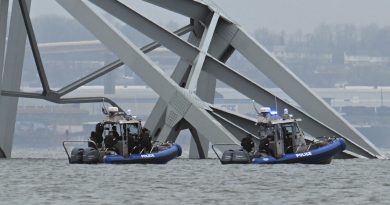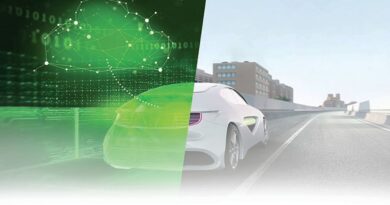Radar technology gets a refresh, increased role in automated driving systems
Radar, a technology invented more than a century ago and first widely used during World War II, could soon improve the performance of automated driving systems.
While technology companies often highlight laser-based lidar sensors as a key enabler of automated driving, experts say next-generation radar sensors may hold some advantages. Namely, it has greater capability during bad weather and may be more cost effective.
“Radar just does what people want it to do,” said Matt Markel, president of startup Spartan Radar and former head of radar at self-driving technology company Waymo. “It’s unlike lasers, which when running, can essentially be useless in fog. Radar sees right through it.”
Radar made its automotive debut in the 1990s as a component in adaptive cruise control applications. Now, companies are exploring 4D imaging radar, which can provide perception, velocity information on targets and a lidar-like point cloud.
In today’s automated vehicles, cameras, lidar and radar serve complementary roles. Going forward, imaging radar could not only improve its performance in that same setup, it could also supplant lidar.
Imaging radar is gaining traction and interest in the marketplace.
In January, Israeli automated driving company Mobileye said it is collaborating with Taiwan’s Wistron NeWeb Corp. to develop automotive-grade 4D imaging radars.
The product, expected to be ready in two years, will improve AV perception and reduce the need for multiple lidar sensors in vehicles, said Yaniv Avital, vice president and general manager of Mobileye Radar.
In April, Israel’s Arbe Robotics Ltd. and China’s Weifu High-Technology Group disclosed a deal to provide Chinese autonomous trucking company KargoBot with 4D imaging radars for its commercial trucks. The deal involves research and development along with placing Arbe’s radars in in the Level 4 trucks KargoBot plans to produce. Executives from Weifu and KargoBot said Arbe’s radars would enhance safety features on their trucks.
In February, Arizona-based Lunewave, another next-generation radar startup, said it had completed development projects with leading global automakers.
Spartan recently raised $17 million from investors to further develop its flagship 4D radar-based software designed to improve the resolution and range of driver-assist and autonomous systems.
Mobileye said its radars can offer a detailed 4D image of the roadway at distances of at least 1,000 feet, with a 140-degree field of view at medium ranges. As the industry’s collective radar technology improves toward lidar-like levels, its cost may allow it to surpass its rival sensor and complement camera information.
“You’ll want to have two sensors for some level of redundancy, you want two to cover the areas where that sensing modality is weak,” Markel said. “Is it going to be radar or lidar? I think that from a price point, from weather, from reliability, maintainability, I think we’re seeing most people go the radar route for now.”
Not everyone is convinced. But more people who rely on lidar are at least intrigued.
Jason Fischer, executive chief engineer of autonomous technology at General Motors, said the automaker is squarely a “lidar-based company.” He does not believe that imaging-radar tech is yet on par.
“I don’t believe it’s there today,” he said. “But it’s a growing field, it’s something we’re looking at because there’s cost parity there.”
It’s not just cost parity. Imaging radar provides information to automated systems that can help them get out of tricky situations, particularly if they are receiving false-positive obstacles from other sensors. Radar can be an accurate cross-check, Markel said.
“The cars are getting false alarm hits and that’s why they can’t move forward,” he said.
Amit Kumar, vice president of engineering at automated-driving company Plus.Ai, which has focused its software on the trucking industry, sees the potential for imaging radar to replace lidar.
Imaging radar is not yet commercialized, he said. “There are certain issues with the imaging radar,” Kumar said. “If manufacturers can overcome them, there’s some potential there.”
Phil Magney, founder and principal adviser of VSI Labs, a St. Louis Park, Minn., firm that tests and researches advanced safety and automated driving systems, said radar is entrenched as part of automated driving systems.
“I think radar has a bright future, so do cameras and lidar,” Magney said. “There’s no one sensor that can do it all.”
Source : Autonews.com




